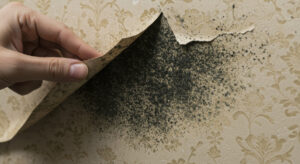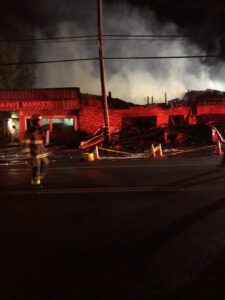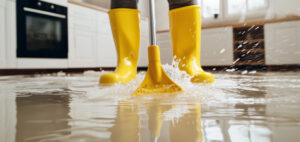The word “mold” might conjure images of a little green fuzz on an old loaf of bread. Yet, when this uninvited guest takes residence in your home, it can become a harbinger of trouble, both for your health and your property.
While mold plays a vital role in nature by breaking down dead organic matter, indoors, it’s a different story. Mold in your home can cause a range of health issues and damage to your property, often hiding in plain sight.
Understanding and addressing mold is crucial to maintaining a safe living environment. Looking for the best mold remediation Sonoma County? In this post, we’ll uncover the hidden dangers of mold in your home, guiding you on how to identify, prevent, and eliminate it effectively.
What is Mold?
Mold is a type of fungus that can grow indoors and outdoors, thriving in damp, warm, and humid conditions. The role of mold in the wild is to break down dead organic matter. In nature, it’s beneficial, but inside our homes, it can be a nuisance.
Why is Mold Hazardous?
Mold reproduces through tiny spores that float through the air, landing on surfaces where they can grow. When mold grows in our homes, it can lead to health problems, degrade our living space, and even reduce property value.
Health Risks Associated with Mold
Exposure to mold can lead to various health issues, particularly for those with allergies, asthma, or compromised immune systems. Symptoms can range from nasal stuffiness, throat irritation, coughing, and wheezing, to more severe allergic reactions.
Some molds produce mycotoxins that can pose serious health risks. A 2004 study by the Institute of Medicine (IOM) found sufficient evidence to link indoor mold exposure with respiratory tract symptoms, coughing, and wheezing in otherwise healthy individuals.
What Does Mold Toxicity Look Like?
Allergic Reactions
Mold can trigger allergic responses, including sneezing, runny nose, red eyes, and skin rash. Those with mold allergies may experience more severe reactions.
Asthma Attacks
For individuals with asthma, mold exposure can exacerbate symptoms, leading to increased frequency and severity of asthma attacks.
Respiratory Infections
Mold can cause respiratory infections, especially in individuals with weakened immune systems, chronic lung illnesses, or in children and the elderly.
Irritation
Exposure to mold can cause irritation of the eyes, skin, nose, throat, and lungs, even in people who aren’t allergic to it.
Neurological Effects
Certain molds produce mycotoxins that can lead to more serious health issues if ingested, inhaled, or touched, including neurological problems and, in extreme cases, death.
How Does Mold Affect Your Property?
Beyond health, mold can be a property owner’s nightmare. It can infiltrate walls, ceilings, and floors, undermining structural integrity. Over time, unchecked mold growth can lead to significant damage to buildings and belongings, necessitating costly repairs.
Structural Damage
Mold can weaken the structural integrity of a building by breaking down and consuming the organic matter in wood, causing rot and deterioration over time.
Damage to Personal Belongings
Mold can ruin clothing, books, documents, and electronic devices, leading to significant loss of personal or valuable items.
Increased Maintenance Costs
Dealing with mold can lead to high cleaning, repair, and maintenance expenses, especially if it recurs or isn’t properly addressed initially.
HVAC Contamination
Mold can spread to HVAC systems, contaminating ductwork, and spreading spores throughout a building, leading to more widespread damage and costly clean-up.
Odor Issues
Mold produces a musty odor that can permeate a building, making it unpleasant and potentially uninhabitable until properly remediated.
What are the Most Common Molds in Homes?
Let’s explore some common molds found in homes and the potential health risks they pose, to better understand how to protect our health and living spaces.
Aspergillus
Appearance: can be yellow, green, or black, typically forms thick layers or walls of spores.
Common Locations: Often found on foods and in air conditioning systems.
Health Risks: Can cause respiratory infections and hypersensitivity pneumonitis. Some species produce aflatoxins, which can be carcinogenic.
Cladosporium
Appearance: Olive-green to brown or black, resembling suede in texture.
Common Locations: Found on fabrics, woods, and other damp areas indoors.
Health Risks: Primarily causes allergic reactions such as sneezing, red eyes, and skin rash. In rare cases, it can lead to more serious infections.
Penicillium
Appearance: Blue or green color, velvety texture.
Common Locations: Can be found on wallpaper, fabrics, and in carpeting.
Health Risks: Known to cause allergies and asthma. Some species produce mycotoxins, which are harmful when ingested.
Alternaria
Appearance: Dark green or brown, velvety texture.
Common Locations: Commonly found in showers, on window frames, and in other damp places.
Health Risks: Can cause allergic reactions and exacerbate asthma. It’s also associated with respiratory infections.
Identifying Mold in Your Home
Recognizing mold can be tricky, as it can grow in visible and hidden areas. Look out for discolored patches on walls, ceilings, or floors, a musty odor, or any signs of water damage. Mold comes in various colors and forms, so any abnormal spot or growth should be a red flag.
Prevention and Remediation
Preventing mold involves controlling moisture levels, ensuring good ventilation, and quickly addressing water leaks. Extensive mold should be handled by professionals. DIY remedies can be ineffective and potentially hazardous.
Mold Remediation Experts Near You!
Mold is not just a cosmetic issue; it’s a health and property concern that warrants attention. Being proactive in detecting and addressing mold can protect your family’s health and your home’s value. Remember, when mold is beyond your control, it’s time to call in the experts.
Have you spotted signs of mold in your home? Don’t wait for the problem to escalate. Contact West Coast Fire & Water online or by phone at (707) 462-5326 for a comprehensive mold assessment and remediation.



